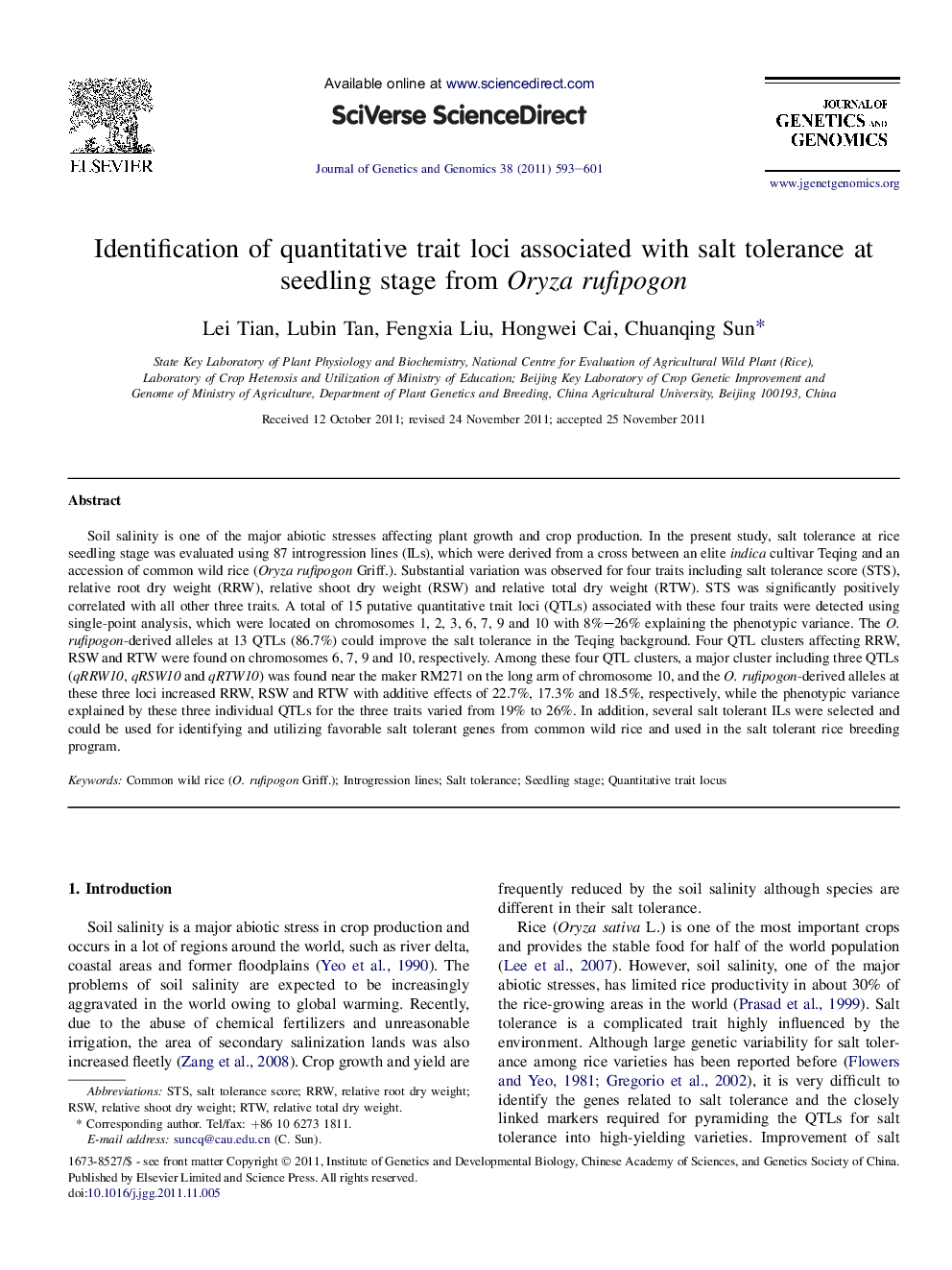| Article ID | Journal | Published Year | Pages | File Type |
|---|---|---|---|---|
| 2787569 | Journal of Genetics and Genomics | 2011 | 9 Pages |
Soil salinity is one of the major abiotic stresses affecting plant growth and crop production. In the present study, salt tolerance at rice seedling stage was evaluated using 87 introgression lines (ILs), which were derived from a cross between an elite indica cultivar Teqing and an accession of common wild rice (Oryza rufipogon Griff.). Substantial variation was observed for four traits including salt tolerance score (STS), relative root dry weight (RRW), relative shoot dry weight (RSW) and relative total dry weight (RTW). STS was significantly positively correlated with all other three traits. A total of 15 putative quantitative trait loci (QTLs) associated with these four traits were detected using single-point analysis, which were located on chromosomes 1, 2, 3, 6, 7, 9 and 10 with 8%–26% explaining the phenotypic variance. The O. rufipogon-derived alleles at 13 QTLs (86.7%) could improve the salt tolerance in the Teqing background. Four QTL clusters affecting RRW, RSW and RTW were found on chromosomes 6, 7, 9 and 10, respectively. Among these four QTL clusters, a major cluster including three QTLs (qRRW10, qRSW10 and qRTW10) was found near the maker RM271 on the long arm of chromosome 10, and the O. rufipogon-derived alleles at these three loci increased RRW, RSW and RTW with additive effects of 22.7%, 17.3% and 18.5%, respectively, while the phenotypic variance explained by these three individual QTLs for the three traits varied from 19% to 26%. In addition, several salt tolerant ILs were selected and could be used for identifying and utilizing favorable salt tolerant genes from common wild rice and used in the salt tolerant rice breeding program.
